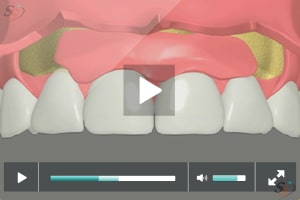Cosmetic Surgical Procedure
Crown Lengthening
This procedure involves the removal of gum tissue (gingiva), bone or both to expose more of a tooth's structure.
What it's Used for
Crown lengthening is done when a tooth needs to be restored, but not enough tooth is present to support a crown or a filling
This can happen when a tooth breaks off at the gum line, or a crown or filling falls out of a tooth that has extensive decay underneath. If your dentist wants to repair the tooth using a crown or a large filling, he or she may need to expose more of the tooth by removing some soft tissue and/or bone.
In some cases, a condition called gummy smile, in which an unusually large amount of gum tissue shows around the upper teeth can be treated using crown lengthening.
Procedure
This procedure is usually done under local anesthesia. Incisions are made to reflect gums away from the teeth. This provides access to the roots of the teeth and the bone that surrounds them. In some cases, by simply removing a little gum tissue when the incisions are made, enough tooth structure will be exposed for your dentist to place a crown or filling. However, in most situations it will also be necessary for the periodontist to remove some bone from around the roots of the teeth. The bone is removed using a combination of hand instruments (resembling chisels) and rotary instruments (similar to the drill and burs used to treat cavities).
Then the gum tissue is secured with sutures. At this point, your teeth will look longer because the gums are now sitting at a lower level than before the surgery. Sometimes a periodontal dressing may be used an intraoral bandage to cover the surgical site. It helps protect the surgical site and aids in healing.
Any temporary crowns will be removed before the procedure begins and replaced afterward.
Soft tissue Grafts
Soft tissue grafts are used for treating gum recession, and/or to improve the esthetics of your gum line.
Gum Recession could be due to a variety of reasons including aggressive tooth brushing, periodontal disease or clenching of teeth.
Exposed tooth roots are the result of gum recession. Gum recession makes your teeth longer giving an older look. Also since the roots are exposed your teeth will be sensitive to cold liquids and foods. Soft tissue grafts can easily eliminate this problem.
Soft tissue grafts can be used to cover roots or develop gum tissue where absent due to excessive gingival recession. During this procedure, your periodontist takes gum tissue from your palate or another donor source to cover the exposed root. This can be done for one tooth or several teeth. A soft tissue graft can reduce further recession and bone loss. It also protects the root from decay and reduces sensitivity.
-scenario-2.jpg)






